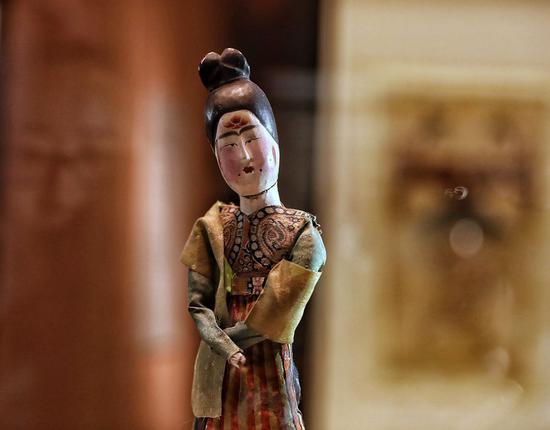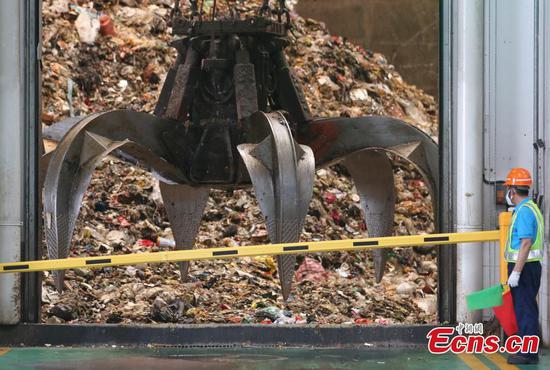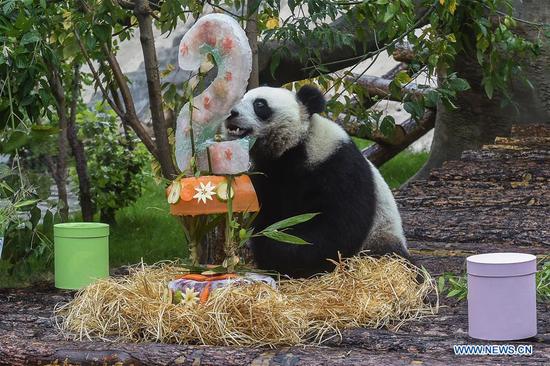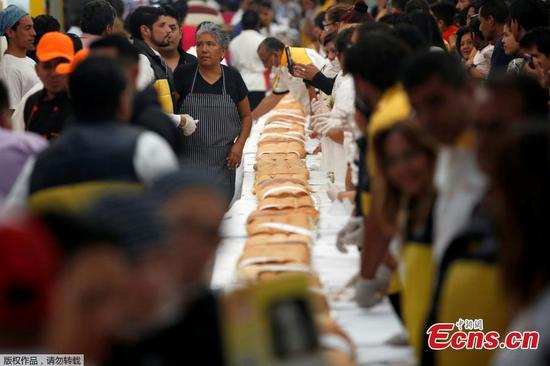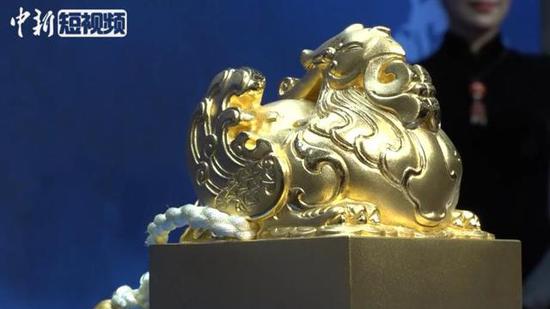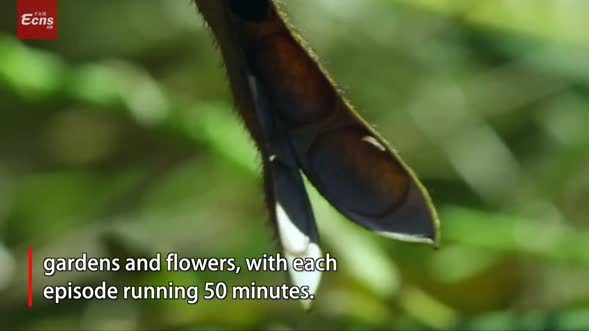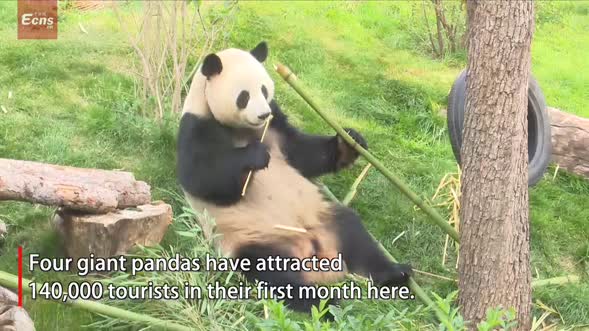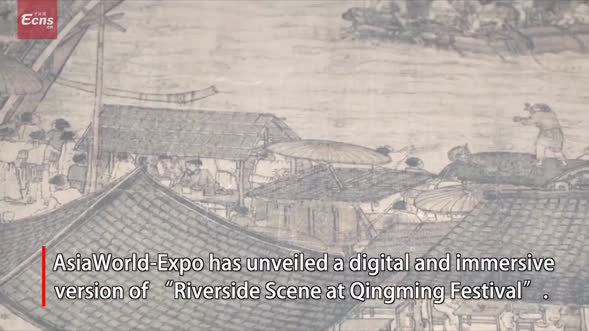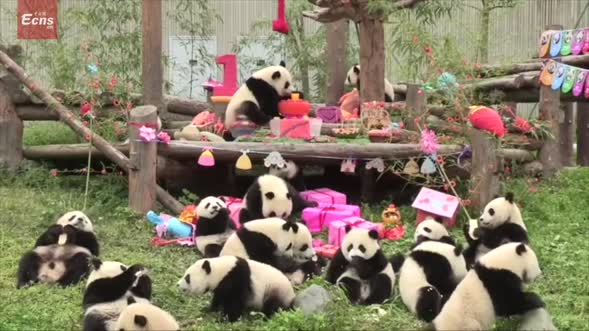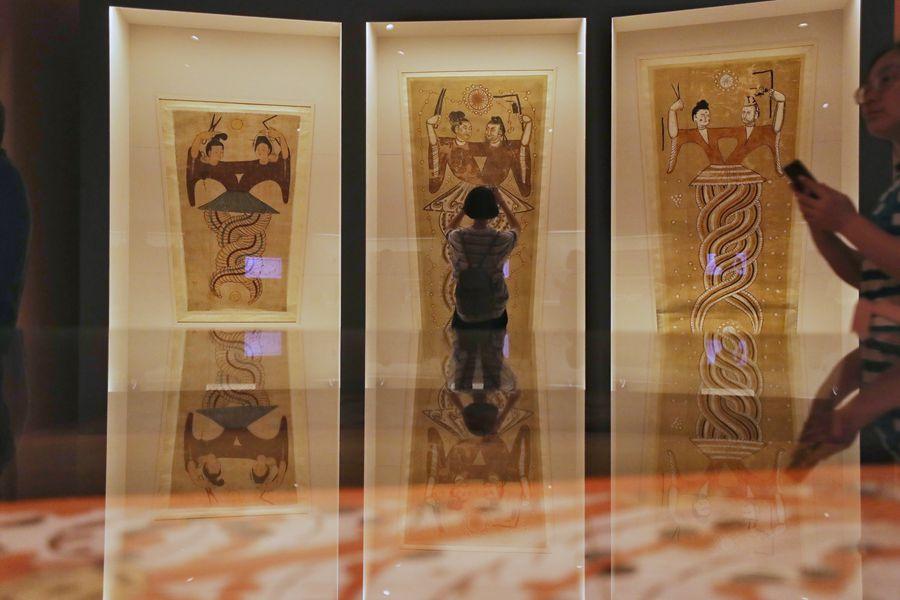
Three paintings from the Tang Dynasty (618-907), which depict Fuxi and Nyuwa-early ancestors of the Chinese in mythology, are on show at the exhibition Wan Li Tong Feng at the National Museum of China in Beijing.(Photo/China Daily)
An exhibition of relics from Xinjiang at the National Museum of China offers an insight into the Tang Dynasty's far-reaching influence over the western regions.
The unpredictable success of The Longest Day in Chang'an, the hit online thriller series set in the heyday of the Tang Dynasty (618-907), has aroused a keen interest from viewers. The food, the attire and other details of the lifestyle that showcases the empire's glory are the source of much-relished discussion, thanks to the production's refined costumes, makeup and props.
But to truly understand the extensive power wielded by the dynasty, there's perhaps no better way than to take a look at the original documents and objects dating back to the era.
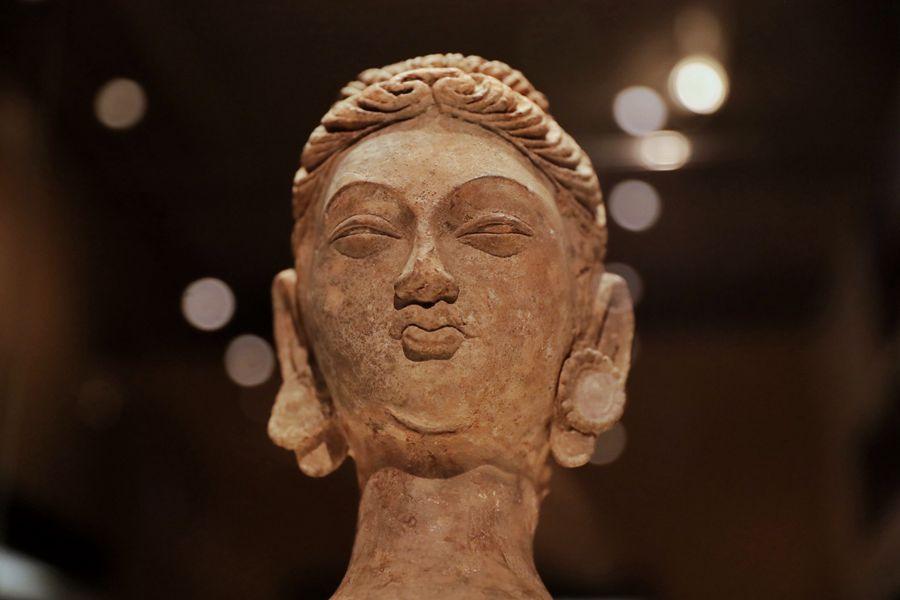
The huge variety of exhibits provide evidence of the dynamic exchanges between the East and West along the ancient Silk Road.(Photo/China Daily)
An exhibition of cultural relics from Xinjiang running currently at the National Museum of China in Beijing shows dozens of such artifacts, the majority of which are on loan from the Xinjiang Uygur Autonomous Region Museum in Urumqi.
The huge variety of exhibits provide evidence of the dynamic exchanges between the East and West along the ancient Silk Road, the Tang Dynasty's far-reaching influence in Xiyu, or the western regions, and more importantly, the empire's jurisdiction over the Xinjiang Uygur autonomous region.
The exhibition through Sept 9 is titled Wan Li Tong Feng, a phrase borrowed from The Book of Han, which documents Chinese history from 206 BC to AD 23, covering mostly the period of the Western Han Dynasty. The title, which literally means "Shared Social Protocols in Thousands of Miles", is used as a metaphor for the unity of a nation.
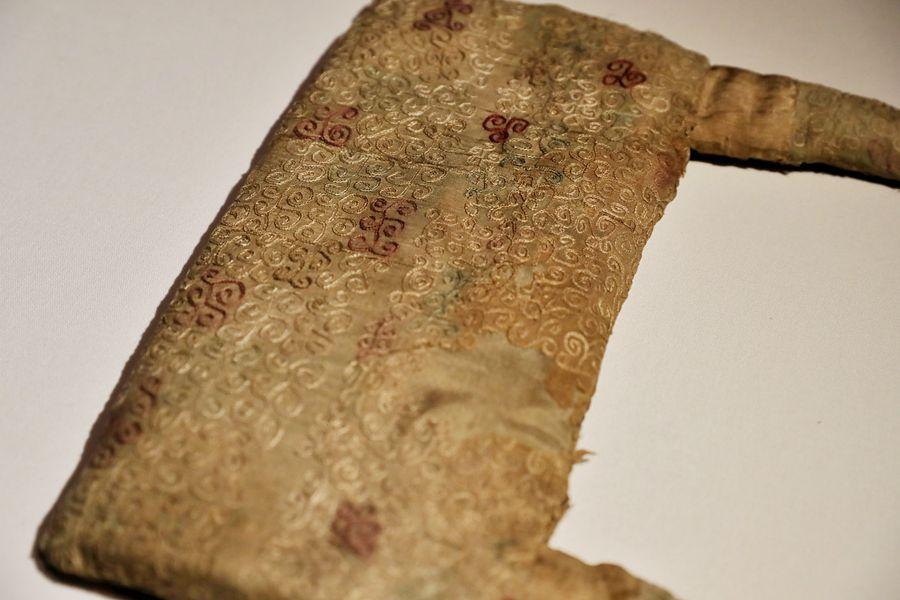
The huge variety of exhibits provide evidence of the dynamic exchanges between the East and West along the ancient Silk Road. (Photo/China Daily)
In addition to its breathtaking scenery and dynamic ethnic cultures, Xinjiang Uygur autonomous region in Northwest China is also home to a plethora of important archaeological discoveries.
One noted finding has been found at a relic site some 40 kilometers east of Turpan, in Xinjiang's northwest. Since the late 1950s, around 456 tombs and 10,000 valuable relics have been discovered across an area covering roughly 10 square kilometers, which has been hailed by historians as the "underground museum of Turpan".
These are the Astana Tombs, an ancient burial site where aristocrats, officials and common people from different ethnic groups living in the nearby ancient city of Gaochang were buried between the third and eighth centuries.
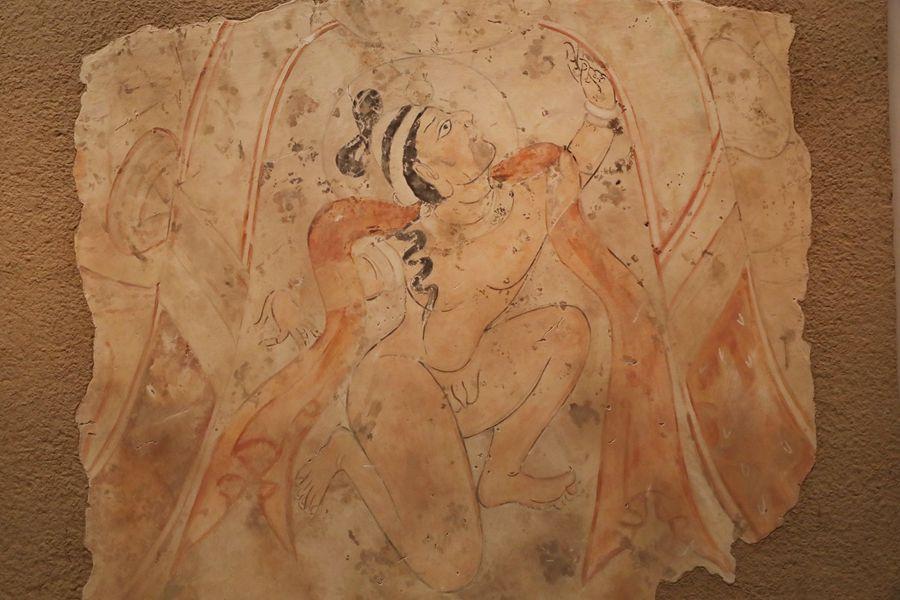
The huge variety of exhibits provide evidence of the dynamic exchanges between the East and West along the ancient Silk Road. (Photo/China Daily)
Culinary culture
The bulk of the tombs that have been excavated so far date back to the Tang Dynasty. A selection of the objects unearthed from Astana are among the artifacts now being exhibited at the National Museum of China, offering visitors a picture of the daily lives of Gaochang residents-what they ate, how they dressed, how they worked and how they prepared for the afterlife, among other facets.
Highlights include three baked desserts made of wheat flour found during an excavation at Astana in 1972, which only measure a few centimeters across and are shaped like flowers.
According to Li Da from the Xinjiang Uygur Autonomous Region Museum's storage department, the delicacies demonstrate the highly developed culinary culture of Zhongyuan, the Central China Plain along the Yellow River, that prevailed in the area surrounding Turpan. It was also via Turpan that grapes, walnuts, onions, garlic and peppers were introduced to Zhongyuan, enriching the local food culture and developing into the basis of Chinese cuisine as we know it today.
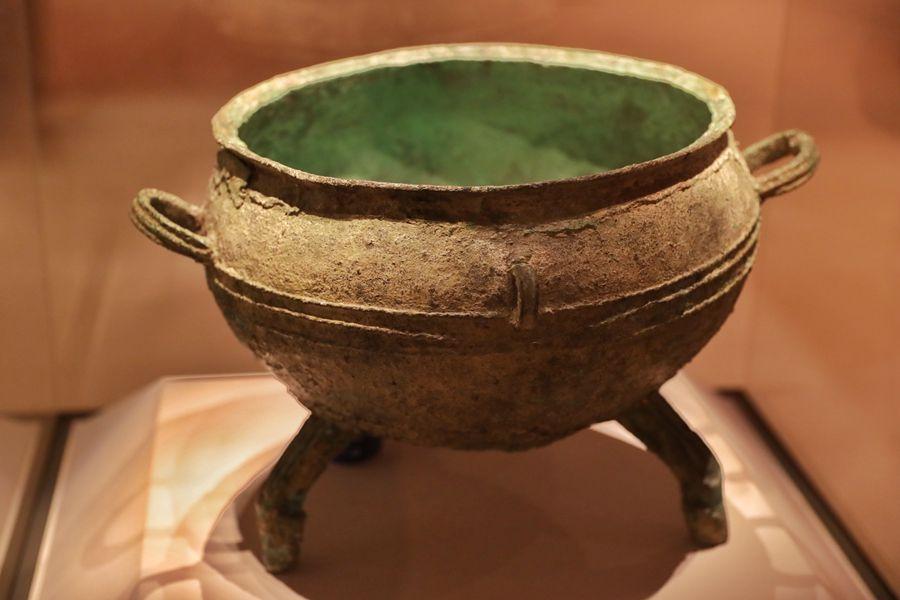
The huge variety of exhibits provide evidence of the dynamic exchanges between the East and West along the ancient Silk Road. (Photo/China Daily)
Yu Zhiyong, director of the Xinjiang museum, says the rather dry climate in Xinjiang has helped to preserve artifacts such as paper documents, brocades and wooden puppets which are susceptible to humidity, offering people today an unprecedented insight into the close relationship between Xinjiang and the hinterlands of Zhongyuan since the pre-Qin Dynasty (221-206 BC) era.
One such example is a pair of wooden puppets excavated in 1973 from the tomb of Zhang Xiong, a general of Gaochang, and his wife. Zhang's ancestors hailed from Henan province in Central China, and settled in Gaochang to develop into a well-connected, extended family over the course of several generations.
One puppet depicts a camel keeper whose thick eyebrows, deep eye sockets and high bridge of his nose suggest he was a member of a non-Han group. The other puppet portrays a woman who wears exquisite makeup and outfits typical of a lady from Tang high society.
Li says the artfully sculpted wooden puppets buried with the Zhang couple were most likely made in Zhongyuan, and represent a style of art unique to the Tang era's heyday.
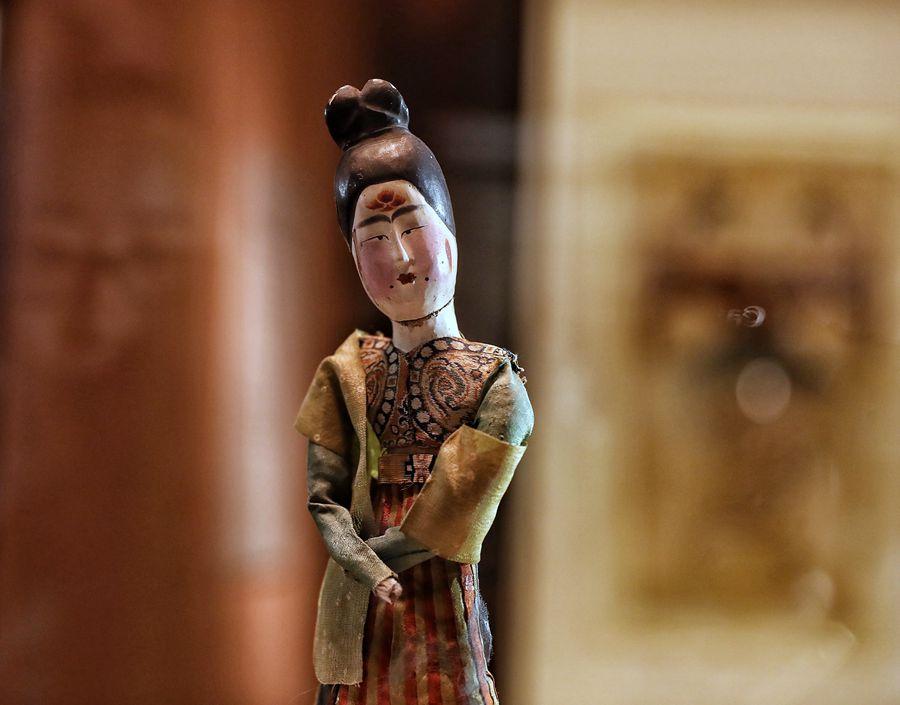
The huge variety of exhibits provide evidence of the dynamic exchanges between the East and West along the ancient Silk Road. (Photo/China Daily)
Expanding influence
The exhibition also shows artifacts from other Chinese dynasties to highlight the continued exchanges between Xinjiang and Zhongyuan in agriculture, metallurgy, trade and culture.
One eye-catching section shows several textile works which Yu, the former head of the autonomous region's archaeological team, says were mainly excavated from the ruins of Loulan, Hotan prefecture, and the city of Turpan, and date back to the Wei (220-265) and Jin (265-420) dynasties.
One of the brocaded pillows on display demonstrates how popular burial customs from the central plains were introduced into the Xinjiang region. The ji ming zhen (crowing rooster pillow) is believed to have been made during the Eastern Han Dynasty (25-220). It features relief patterns of auspicious animals, clouds and intertwined leaves that are interspersed with Chinese characters denoting longevity in the clerical Lishu style of calligraphy.
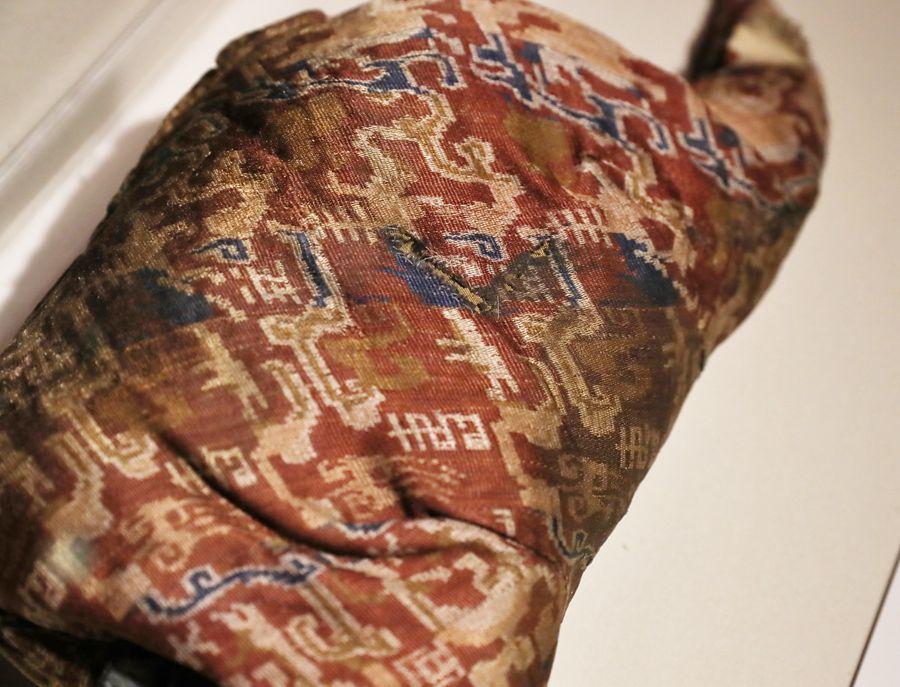
The huge variety of exhibits provide evidence of the dynamic exchanges between the East and West along the ancient Silk Road. (Photo/China Daily)
"Hopefully, this exhibition will make it clear to the audience the continued and intensive cultural influence of Zhongyuan on the western regions at the time," Yu says.
Luo Hao, a curator from the National Museum of China, says the exhibition shows a continuous administration in Xinjiang by the government of various dynasties from Chinese history, beginning with the establishment of the frontier command headquarters (duhufu) for pacifying the western regions in 60 BC, in the present-day Luntai county, which is seen as a symbol of Xinjiang's official integration into Chinese territory.
A contract found in one of the Astana Tombs in 1967 shows how a Han settler Yan Keren rented a vineyard from a native named Qu Shantong. The document outlines the annual fees that Yan had to pay his landlord over the course of his fiveyear rental. It also includes several characters introduced during the reign of Tang empress, Wu Zetian.
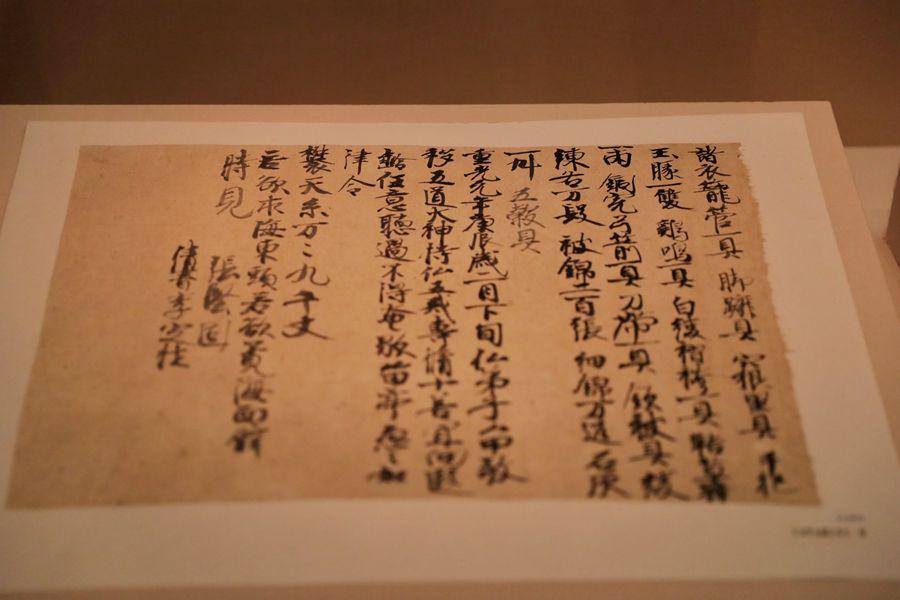
The huge variety of exhibits provide evidence of the dynamic exchanges between the East and West along the ancient Silk Road. (Photo/China Daily)
Eight seal stamps found on Tang official papers unearthed in Turpan are also on display at the exhibition. Etched in Zhuanshu-style script, the seals show a facet of the administrative system being implemented across several protectorates and counties in Xinjiang.
Shan Wei, deputy director of the National Museum, says: "Xinjiang's various ethnic cultures have always been rooted in the soil of Chinese civilization and constitute an inseparable part of it. The region is a place jointly developed and owned by the different ethnic groups of China."
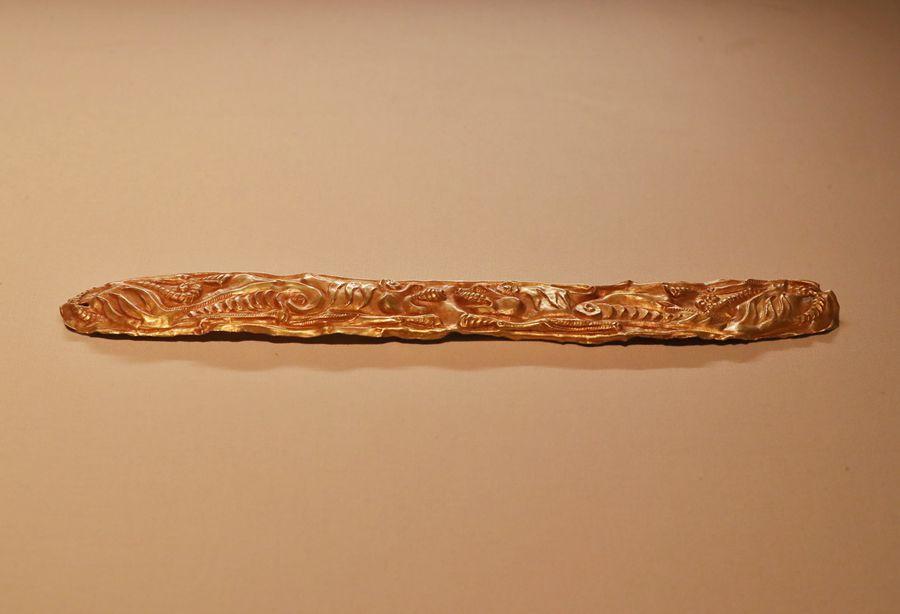
The huge variety of exhibits provide evidence of the dynamic exchanges between the East and West along the ancient Silk Road. (Photo/China Daily)










